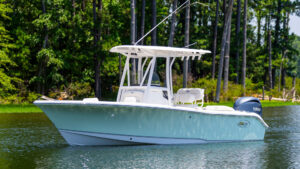Choosing the Right Boat Storage Option for Your Needs

Owning a boat is one of life’s great pleasures, but every boat owner eventually faces the same question: where do you keep it when it’s not in use? Storage isn’t just about convenience, it plays a huge role in how well your boat holds up over time, how much maintenance it requires, and even how quickly you can get out on the water when the mood strikes.
The right choice depends on your situation. Some owners prefer the affordability of uncovered or covered parking, while others invest in dry stack facilities for maximum protection. Frequent boaters often turn to wet slips for easy access, accepting the added maintenance that comes with leaving a vessel in the water full-time. Each option has its own pros, cons, and costs, and understanding them is key to keeping your boat safe, accessible, and ready to go when you are.
In this guide, we’ll walk through the four most common boat storage solutions; uncovered parking, covered parking, dry stack, and wet slips, highlighting how they work, what they cost, and which type of boater each one fits best.
Uncovered Boat Storage
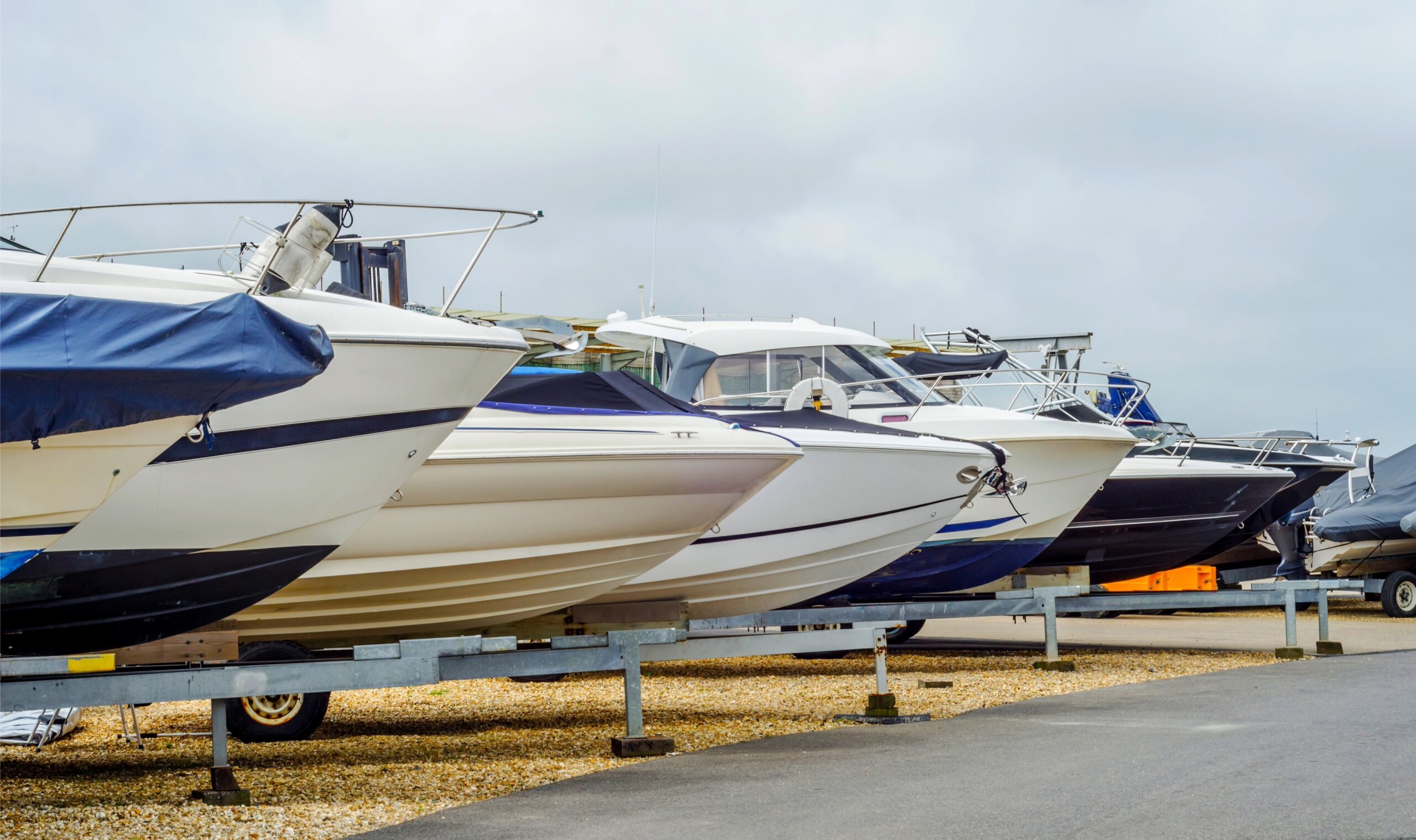
Uncovered parking is the most basic and affordable form of boat storage. It involves parking your boat in an open lot, much like leaving a car in an outdoor space. At many marinas and storage facilities, uncovered storage is widely available and often the cheapest option, with rates in many regions starting around $50 to $100 per month depending on boat size and location.
This setup works best for boaters in milder climates where harsh weather is less of a concern. However, the tradeoff is exposure, your boat sits directly in the sun, rain, and wind, which accelerates wear on upholstery, paint, and gelcoat. A high-quality, properly fitted boat cover is essential to guard against UV damage, water intrusion, and debris buildup.
While uncovered parking keeps costs low and makes your boat easily accessible, it also demands more diligence from the owner. Regular inspections, cover adjustments, and routine cleanings are critical to prevent long-term damage. For those balancing budget with convenience, uncovered storage can be a smart solution, but it comes with the responsibility of more hands-on upkeep.
Covered Boat Storage
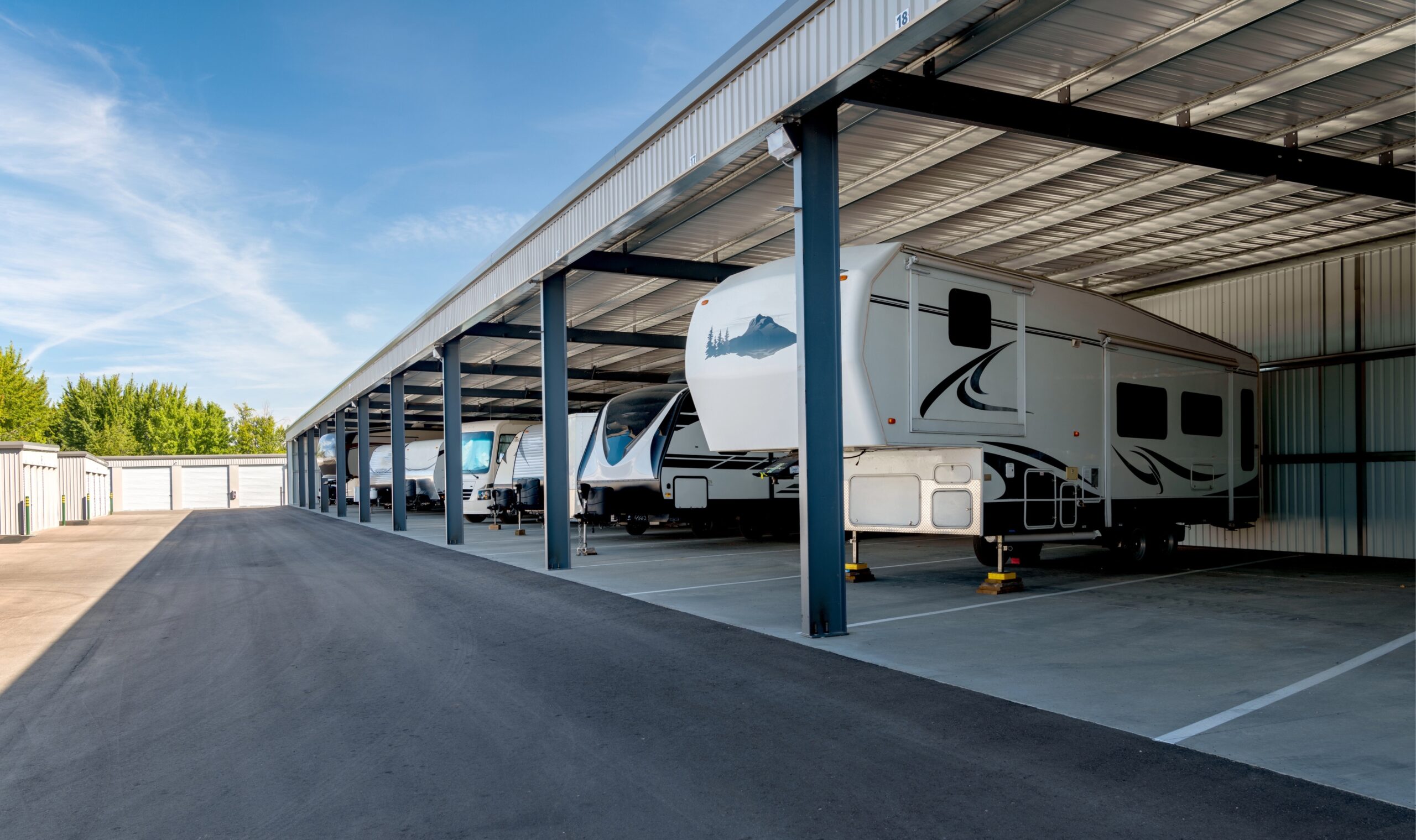
Covered parking provides an extra layer of protection compared to uncovered storage by keeping your boat under a roof or canopy. While your boat is still exposed to open air on the sides, the overhead cover shields it from direct sunlight, rain, and snow, reducing some of the harshest weather impacts. Expect to pay 10–30% more than uncovered storage, which typically puts covered parking in the $75 to $150 per month range for many facilities.
This option is especially valuable in regions with unpredictable weather or intense seasonal sun. By limiting exposure to UV rays and moisture, covered parking slows fading, cracking, and mildew, helping to extend the lifespan of both your boat’s exterior and its interior upholstery.
The tradeoff is that while it’s more protective than uncovered storage, it doesn’t fully insulate your boat from the elements. Wind-driven rain, humidity, or snow can still affect surfaces, and like uncovered storage, you’ll still want to use a fitted cover for maximum protection. For many owners, though, covered parking offers a good balance between affordability and peace of mind, especially when indoor storage isn’t practical or available.
Dry Stack Storage
Dry stack storage is a popular choice for boaters who want the security and convenience of rack storage, and it comes in two main types: outdoor dry stack and indoor dry stack.
Outdoor Dry Stack
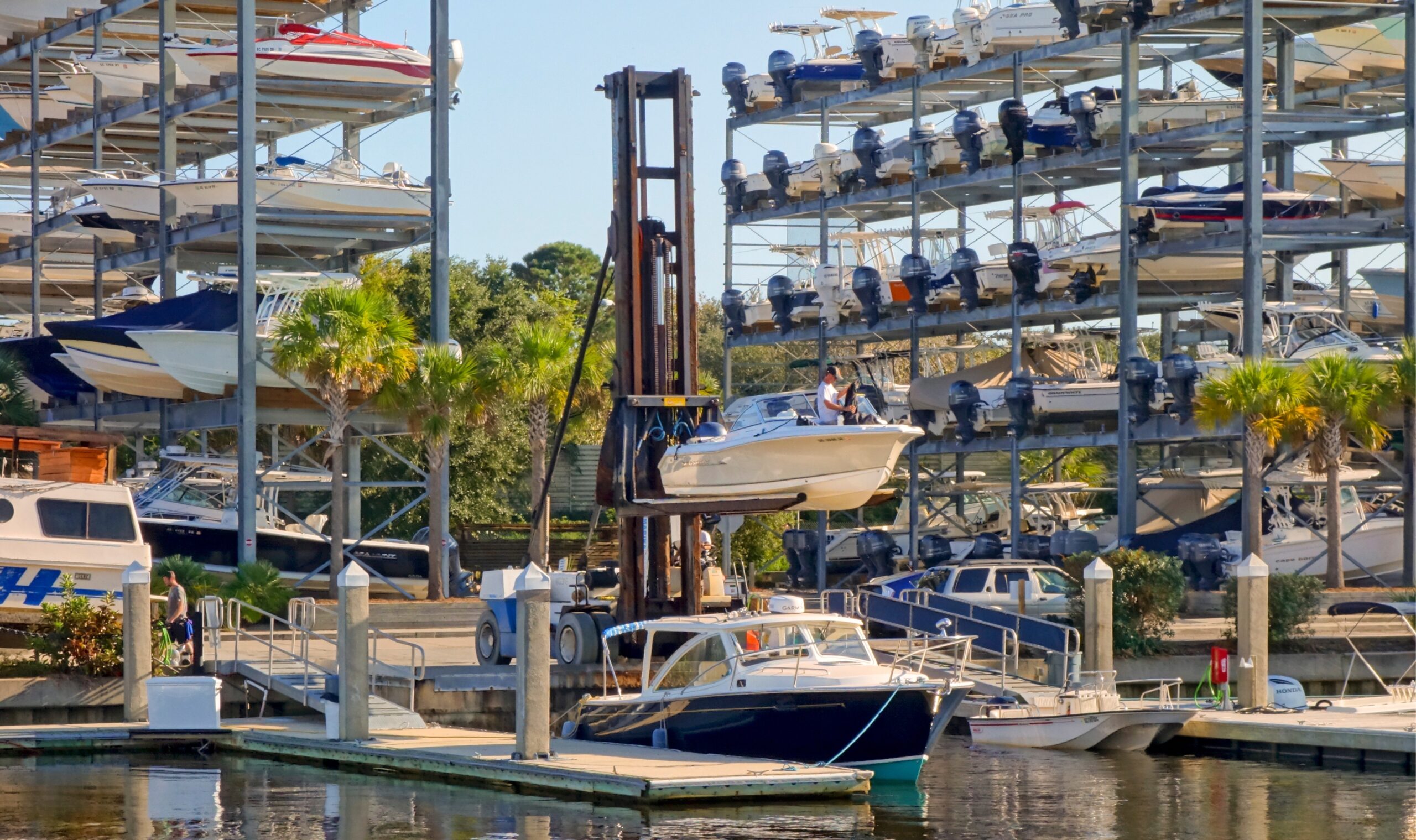
In this setup, boats are stacked on racks in the open air. While they’re kept off the ground and protected from theft or vandalism, they’re still exposed to sun, rain, and wind. Outdoor dry stack is generally less expensive than indoor options, with rates starting around $150 to $300 per month, depending on boat size and marina location. It’s a good balance of security and affordability, but owners will still need to keep up with covers and maintenance to guard against UV and weather-related wear.
Indoor Dry Stack
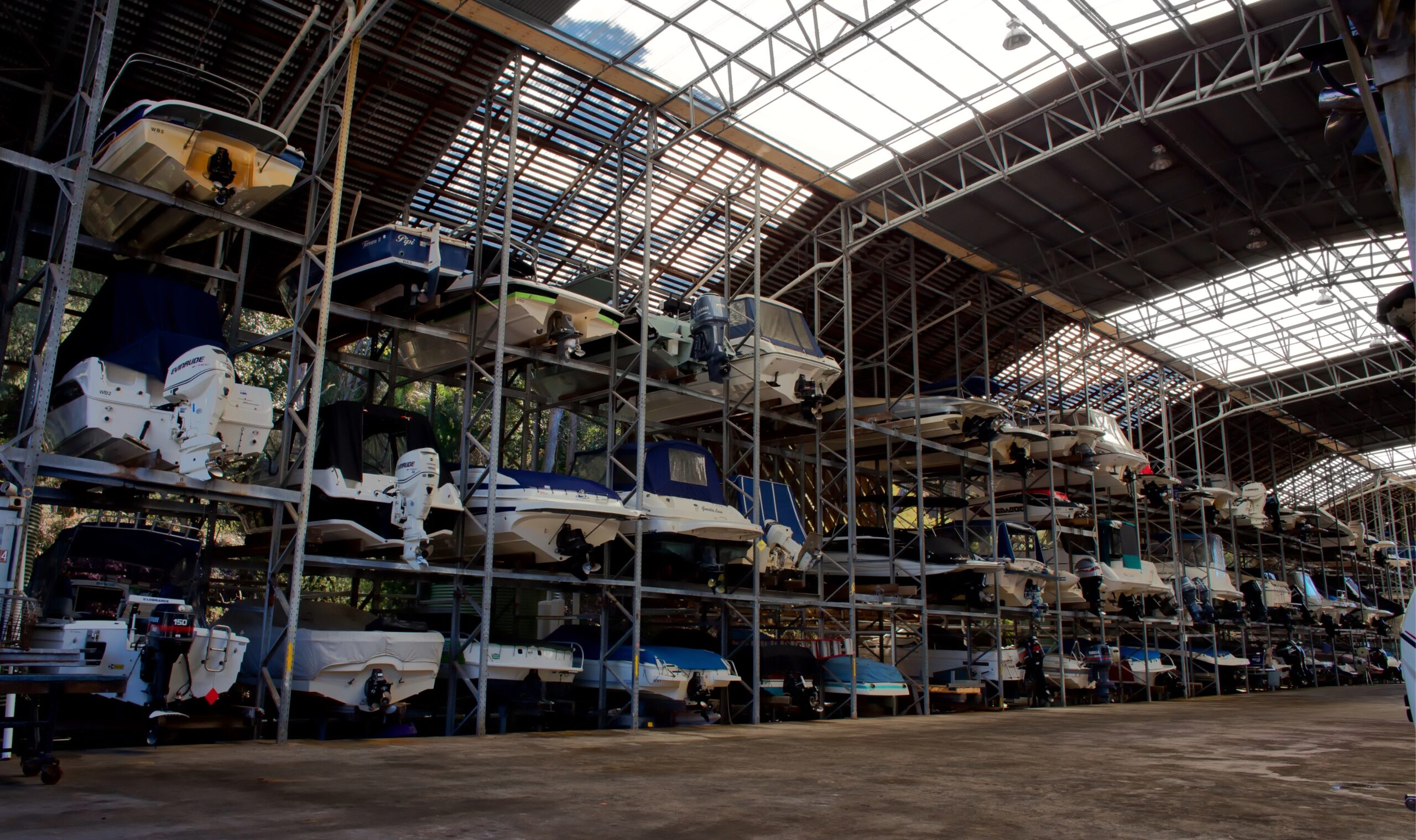
Indoor dry stack takes protection to the next level. Boats are stored in a warehouse-like facility on tall rack systems, completely shielded from the elements. This eliminates most sun and weather damage, reducing the need for bottom paint, detailing, and cosmetic upkeep. Many facilities also offer added services such as fueling, rinsing, and routine maintenance. Costs are higher, typically $250 to $500 per month, but the investment pays off in lower long-term maintenance and stronger resale value.
Size Considerations
Dry stack is best suited for small to mid-sized boats, though some marinas can handle models up to 40 feet depending on their lift and rack system. Access can be less flexible, with retrieval often requiring a call ahead, and busy weekends sometimes leading to wait times
For owners who don’t mind scheduling launches in exchange for added security and protection, dry stack, especially indoor facilities, offers one of the best ways to preserve a boat’s condition and reduce maintenance costs over time.
Wet Slip Storage
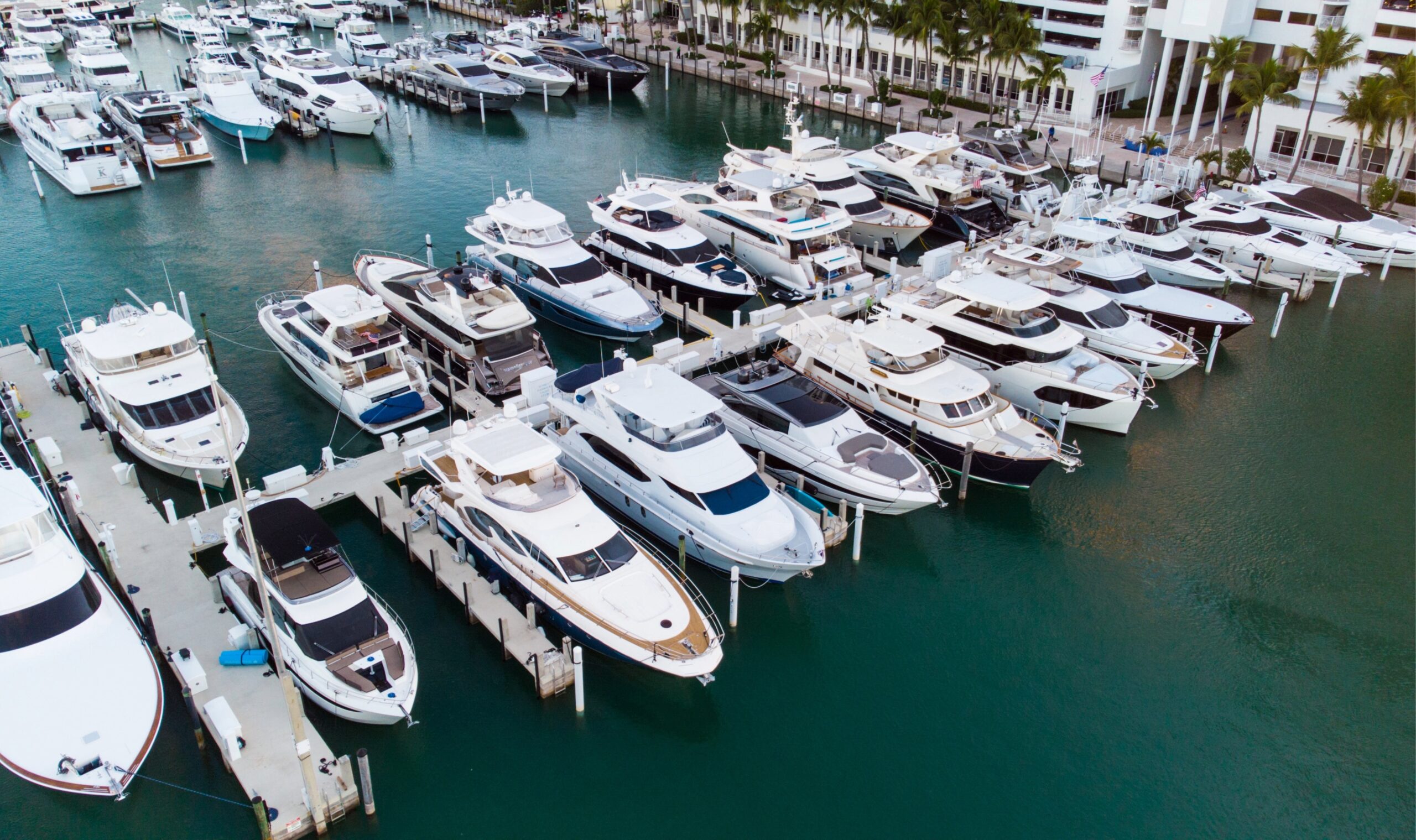
Wet slip storage means keeping your boat in the water at a marina, tied up in a dedicated slip. It’s one of the most convenient options because your boat is always ready to go—just step aboard, untie the lines, and head out. Wet slips are available in a wide range of sizes, accommodating everything from small fishing boats to large yachts.
The biggest benefit is accessibility. If you use your boat often, wet slip storage eliminates the hassle of trailering or scheduling a launch, making spontaneous trips easy. Many marinas also provide useful amenities like power hookups, fresh water, dock carts, security, and sometimes even restrooms, showers, and fuel docks.
That convenience comes at a higher price. Wet slips typically cost $10 to $25 per foot, per month, depending on location, marina amenities, and the size of the slip. This can make it one of the more expensive storage methods, especially for larger boats.
There are also maintenance considerations. Leaving a boat in the water full-time exposes it to marine growth, electrolysis, and corrosion. Regular bottom cleaning, anti-fouling paint, and zinc replacement are necessary to keep the hull and running gear in good condition. Boats stored in saltwater slips in particular require more vigilant upkeep than those in freshwater.
For boaters who use their vessels frequently and value convenience above all else, wet slip storage is often worth the cost and added maintenance. But for seasonal boaters or those who don’t get out as often, it may not provide the best balance of protection and expense.
How to Choose the Best Boat Storage for You
The best storage solution depends on your budget, climate, how often you use your boat, and the size of your vessel. Each option comes with tradeoffs, and thinking through these factors will help narrow down what works best for you.
Budget: Uncovered parking is the most affordable option, followed by covered parking. Dry stack and wet slips cost more, but they also provide greater protection or added convenience.
Climate: In harsher climates with extreme heat, heavy snow, or long winters, indoor dry stack is the most protective. For milder regions, uncovered or covered parking may provide enough shelter at a lower cost.
Usage Frequency: If you’re on the water every weekend, wet slip storage offers unmatched convenience—your boat is always ready to go. For occasional use, covered parking or dry stack can make more sense, offering protection without the higher slip fees.
Boat Size: Smaller and mid-sized boats are well-suited to dry stack storage, while larger vessels often require wet slips. Covered or uncovered parking works best for trailerable boats or those stored seasonally.
By weighing these factors, you’ll get a clearer picture of which storage option fits your lifestyle and keeps your boat in the best condition for how you use it.
FAQs
Uncovered parking is usually the most affordable option, with prices often starting around $50 to $100 per month. It works best in mild climates, but you’ll need a high-quality cover and more frequent maintenance to protect against sun and weather damage.
For many owners, yes. While it costs more, often $200 to $500 per month, indoor dry stack storage provides the best protection from sun, rain, and theft. It also reduces long-term upkeep, since boats kept out of the water don’t need as much maintenane. The main tradeoff is less flexibility, since you’ll usually need to schedule retrievals.
It depends on your location and the type of water. In warmer regions, boats can stay in wet slips year-round if they’re maintained properly. In colder climates, freezing conditions make this impractical. Even in mild areas, year-round water storage requires more frequent bottom cleaning and anti-fouling treatments.
Most facilities handle boats up to about 30–35 feet, but some marinas with heavy-duty forklifts and tall racks can accommodate boats up to 40 feet. Anything larger typically requires wet slip storage.
Wet slip storage is the most convenient for frequent use. Your boat is always in the water, ready to go at a moment’s notice. The tradeoff is higher monthly costs and more upkeep to combat marine growth and corrosion.
Boats left in the water require more maintenance. Marine growth, corrosion, and electrolysis can all cause long-term issues if not managed. Regular bottom cleaning, fresh zincs, and anti-fouling paint are essential to keeping a slip-stored boat in good condition.
For many owners in moderate climates, yes. Covered storage shields your boat from UV rays and precipitation, slowing down wear and fading. However, since it’s still open on the sides, wind-driven rain and humidity can still cause issues, so a quality cover is still recommended.
Think about budget, climate, how often you use your boat, and its size. Uncovered and covered parking are cost-effective. Dry stack offers the most protection for small to mid-sized boats. Wet slips are ideal if you’re on the water frequently or own a larger vessel that doesn’t fit in racks.
What’s Best for you
Understanding the various boat storage options is crucial for maintaining your boat’s longevity and performance. Whether you opt for the affordability of uncovered parking, the added protection of covered parking, the comprehensive safety of dry stack storage, or the convenience of a wet slip, each option has its unique benefits. By considering your specific needs and circumstances, you can choose the best boat storage solution to keep your vessel safe, secure, and ready for your next adventure on the water.
Search
Recent Posts
When dreaming of owning a boat,…










